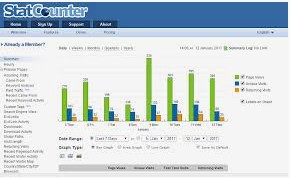Indonesian Efl Students’ Perception Towards Online Learning: Voices From Freshmen
DOI:
https://doi.org/10.15642/ijet2.2022.11.1.57-68Keywords:
students' perception, preferences, online learningAbstract
Covid-19 pandemic has inevitably shifted the conventional face-to-face learning in higher education institution to online learning. This study examined the perceptions of Indonesian EFL students, especially freshmen, towards online learning. Employing quantitative descriptive design with 83 respondents, this study focused on 3 aspects; 1) students’ perception, 2) students’ preferences, and 3) advantage and disadvantage of online learning based on students’ experience. The result showed that based on students’ perception 1) online learning is effective (53%, n = 44) to improve English proficiency, and somewhat effective (42.2%, n = 35) to improve social competences, 2) even though students’ enjoyment shows positive trends, they still prefer face-to-face learning (62.7%, n = 52) rather than online learning (37.3%, n = 31), and 3) the most frequent choose advantage of online learning is able to stay at home (79.5%, n = 66), while the most frequent disadvantage is less interaction with lecturers and classmates (74.7%, n = 62). This research has proven that the implementation of online learning earned numerous positive perceptions, followed with several challenges that need to be overcome by any means.
Downloads
References
Almaiah, M.A., Masita, M.A.J. Investigating students’ perceptions on mobile learning services. International Journal of Interactive Mobile Technologies, 8(4), 31-36. http://dx.doi.org/10.3991/ijim.v8i4.3965
Arbaugh, J. B. (2000). How classroom environment and student engagement affect learning in internet-based MBA courses. Business Communication Quarterly, 63(4), 9–26.
Baczek, M., Zagancyk-Baczek, M., Szpringer, M., Jaroszynski, A., Wozakowska-Kapton, B. (2021). Students’ perception of online learning during COVID-19 pandemic. Medicine 2021;100:7(e24821). Http://dx.doi.org/10.1097/MD.0000000000024821
Barab, S. A., & Duffy, T. M. (2000). From practice fields to communities of practice. In D. H. Jonassen, & S. M. Land (Eds.), Theoretical foundations of learning environments (pp. 25–56). Mahwah, NJ7 Lawrence Erlbaum Associates.
Basilaia, G., & Kvavadze, D. (2020). Transition to Online Education in Schools during a SARS-CoV-2 Coronavirus (COVID-19) Pandemic in Georgia. Pedagogical Research, 5(4). https://doi.org/10.29333/pr/7937.
Benbunan-Fich, R., & Hiltz, S. R. (1999). Educational applications of CMCS: Solving case studies through asynchronous learning networks. Journal of Computer-Mediated Communication, 4(3).
Bonk, C. J., Hansen, E. J., Grabner-Hagen, M. M., Lazar, S. A., & Mirabelli, C. (1998). Time to bconnectQ: Synchronous and asynchronous case- based dialogue among preservice teachers. In C. J. Bonk, & K. S. King (Eds.), Electronic collaborators: Learner-centered technologies for literacy, apprenticeship, and discourse (pp. 289–314). Mahwah, NJ7 Lawrence Erlbaum Associates.
Duffy, T. M., Dueber, B., & Hawley, C. L. (1998). Critical thinking in a distributed environment: A pedagogical base for the design of conferencing systems. In C. J. Bonk, & K. S. King (Eds.), Electronic collaborators: Learner-centered technologies for literacy, apprenticeship, and discourse (pp. 51–78). Mahwah, NJ7 Lawrence Erlbaum Associates.
Essex, C., & Cagiltay, K. (2001). Evaluating an online course: Feedback from Distressed students. Quarterly Review of Distance Education, 2(3), 233 – 239.
Hara, N., & Kling, R. (2000). Students’ distress with a Web-based distance education course: An ethnographic study of participants’ experiences. Information, Communication and Society, 3(4), 557–579.
Hay, A., Hodgkinson, M., Peltier, J. W., & Drago, W. A. (2004). Interaction and virtual learning. Strategic Change, 13(4), 193–201.
Hendrawaty, N., Angkarini, T., and Retnomurti, A.B. (2021) EFL undergraduate students’ perceptions of online learning application during the COVID-19 outbreak, Jurnal Pendidikan dan Pengajaran, 56(1), 110-119.
Henson, S. W., Kennett, P. A., & Kennedy, K. N. (2003). Web-based cases in strategic marketing. Journal of Marketing Education, 25(3), 250 – 259.
Jiang, M., & Ting, E. (1998). Course design, instruction, and students’ online behaviors: A study of instructional variables and students’ perceptions of online learning. Paper presented at the Annual Meeting of the American Educational Research Association, San Diego, CA.
Kim, K., Liu, S., Bonk, C.J. (2005) Online MBA students’ perceptions of online learning: Benefits, challenges, and suggestions. The Internet and Higher Education, 8, 335-344.
Kim, Kyong-Jee & Liu, Shijuan & Bonk, Curt. (2005). Online MBA students' perceptions of online learning: Benefits, challenges, and suggestions. The Internet and Higher Education. 8. 335-344. 10.1016/j.iheduc.2005.09.005.
Klingner, B. G. (2003). The relationship between learning styles of adult learners enrolled in online courses at Pace University and success and satisfaction with online learning. Unpublished doctoral dissertation, Walden University, Minneapolis.
McCall, D. E. (2002). Factors influencing participation and perseverance in online distance learning courses: A case study in continuing professional education. Unpublished doctoral dissertation, Florida State University, Tallahassee.
National Centre for Vocational Education Research. (2002). Flexibility through online learning: At a glance. Australia7 National Centre for Vocational Education Research.
Nugroho, A. D. (2020). How E-Learning Deals with Higher Education during the Pandemic in Indonesia. Loquen: English Studies Journal, 13(2), 51 https://doi.org/10.32678/loquen.v13i2.3555.
Schramm, R. M., Wagner, R. J., & Werner, J. M. (2000). Student perceptions of the effectiveness of Web-based courses. Distance Education Report, 4(18), 1–3.
Shea, Peter & Fredericksen, Eric & Pickett, Alexandra & Pelz, William & Swan, Karen. (2001). Measures of Learning Effectiveness in the SUNY Learning Network. Online Education: Learning Effectiveness, Faculty Satisfaction, and Cost Effectiveness. 2.
Song, L., Singleton, E. S., Hill, J. R., & Koh, M. H. (2004). Improving online learning: Student perceptions of useful and challenging characteristics. Internet and Higher Education, 7(1), 59–70.
Soo, K. S., & Bonk, C. J. (1998). Interaction: What does it mean in online distance education? Paper presented at the ED-MEDIA/ED-TELECOM 1998 World Conference on Educational Telecommunications, Freiburg, Germany.
Surani, D., & Hamidah, H., (2019). Students Perceptions in Online Class Learning During the Covid-19 Pandemic. International Journal on Advanced Science, Education, and Religion, 3(3). 83-.95. https://doi.org/10.33648/ijoaser.v3i3.78
Thiyaharajan, Muthuprasad & S., Aiswarya & K S, Aditya & Jha, Girish. (2021). Students’ perception and preference for online education in India during COVID -19 pandemic. Social Sciences & Humanities Open. 3. 10.1016/j.ssaho.2020.100101.
Wise, A., Chang, J., Duffy, T. M., & del Valle, R. (2004). The effects of teacher social presence on student satisfaction, engagement, and learning. Journal of Educational Computing Research, 31(3), 247–271.
Wright, B.M. (2017). Blended learning: Student perception of face-to-face and online EFL lessons. Indonesian Journal of Applied Linguistics, 7(1), 64-71.











